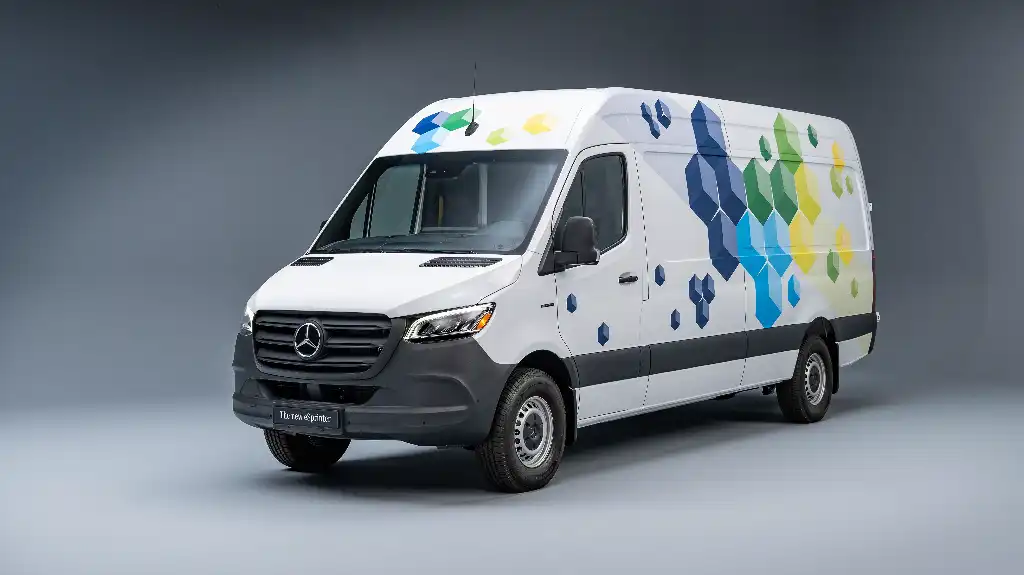
Mercedes-Benz has given the Mercedes eSprinter a significant update boosting its power and range with new motors and battery packs.
The new eSprinter gets an electrically driven rear axle which, in addition to improving the packaging of the electrical systems, has save weight and enabled more variants to be produced. A wider range of eSprinters will be available including chassis cab models with factory built flat bed and refrigerated options and up to three wheelbase lengths for panel vans.
Power for the eSprinter comes from a new permanent magnet synchronous motor producing either 100kW or 150kW. That’s a significant step up from the 85kW motor found in the previous eSprinter which also produced 295Nm of torque compared to 400Nm for the new motor. The motor is said to weigh just 130kg which in addition to new, lighter batteries helps the eSprinter achieve a maximum payload of 1575kg. It also gets a towing capacity of up to 2-tonnes.
The power ratings are for the motor's peak power, which is available for a maximum of 30 seconds. Continuous power in the eSprinter is limited 80kW, while peak torque is 400Nm.
Three different battery sizes are available with 56kWh, 81kWh and 113kWh lithium iron phosphate packs that are now free from any cobalt or nickel. Previously the eSprinter was available with only two battery pack sizes either 41kWh or 55kWh.

Charging rates have increased from the previous eSprinter’s 80kW maximum to 115kW. The Mercedes-Benz eSprinter has both AC and DC charging capabilities with a 10% to 80% recharge said to take just 28 minutes for the smaller 56kWh battery and 42 minutes for the biggest 113kWh battery pack.
The three battery versions:
For the largest battery, the electric range, according to simulations of the WLTP cycle, is up to 400km, while the WLTP city cycle reaches as much as 500km.
The Mercedes-Benz eSprinter’s range claims have been validated by Mercedes-Benz with a return journey from Stuttgart to Munich where the van managed 475km on a single charge. The eSprinter averaged a consumption of 21.9kWh per 100km and finished the journey with 3% still remaining on the range indicator. The verification test was carried out using a 113kWh battery model and in an L3 wheelbase panel van.
Changes to the eSprinter bring it more closely into line with key rivals like the Ford E-Transit and Maxus E Deliver 9, both of which have multiple power outputs and body sizes and variants.
When it comes to looks it's the same eSprinter, but under the skin Mercedes says that everything has changed with the exception of the charging port.
The motor, and rear axle, as well as the batteries are all new. But there's also new leaf springs at the rear to fit around the electric axle. The high voltage system is new too. In fact, the way the eSprinter has been put together is a new concept altogether. It's more modular in its design. The front houses the integrated high-voltage battery and other high-voltage components. The rear is the site of the driven rear axle and electric motor. The middle is where the additional batteries are placed.
Mercedes has been rolling out its MBUX infotainment system across its range of cars and vans for several years, but when you consider that the combustion engine Sprinter was the first of all models to get the system it was unusual that the eSprinter made do without. The previous model also only had a basic LCD display in the instrument cluster for battery information. That's no longer the case.
The latest eSprinter gets the full MBUX system with a 10.25-inch display. It's also been updated with its own EV specific details. That means you'll get real time data on battery charge levels and range. In fact, Mercedes has created a smart interactive range indicator that links with the navigation. It gives you a more accurate idea of just how far your battery charge will take you. Amusingly, the system - which includes an outline of how far you can travel superimposed on the navigation map - is nicknamed "the range potato".
It's one of a number of systems that Mercedes is calling its "Electric Intelligence". It takes into account the traffic conditions and typography of your route. When predicting the range it can also calculate the best possible charging strategy in order to get you to your destination. That can also include arriving at your destination with a certain level of charge. Great for if you know that charging is not available at the stop-off.
The special EV capabilities of the new MBUX include:
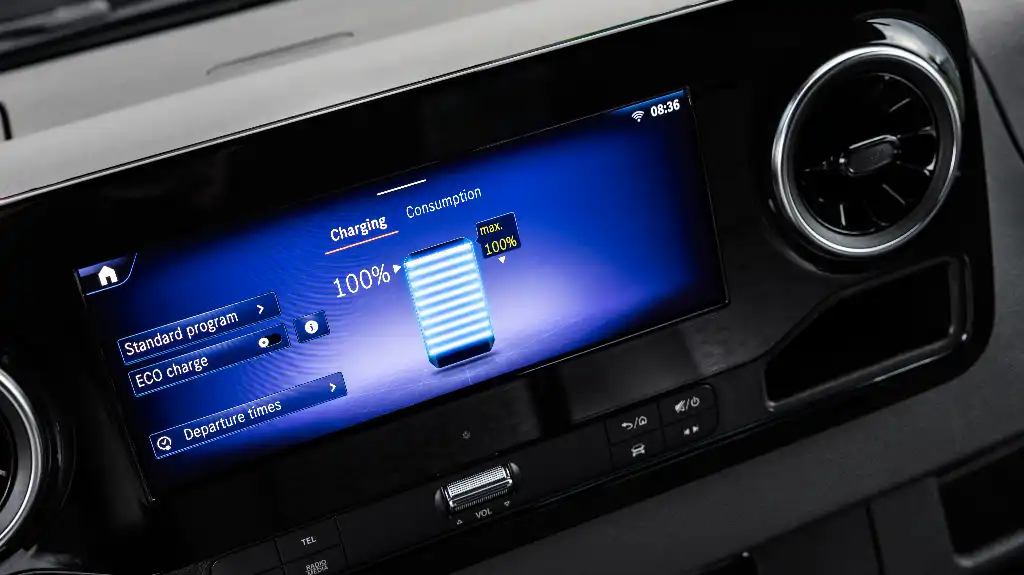
Production of the latest generation Mercedes-Benz eSprinter will be carried out in three locations. Charleston in North Carolina, USA, is the production site for all North American Mercedes-Benz eSprinter vans. European eSprinter models will be produced in two locations, with Ludwigsfelde manufacturing chassis cab variants and Dusseldorf responsible for panel van production. In total, the eSprinter will be available in more than 60 markets.
The new model eSprinter will also be the brand’s first global electric LCV and will go into production the US and Canada in the second half of the year ahead of its launch in Europe.
Mercedes has sold more than 30,000 electric vans to date and has pledged to sell only electric and zero emission vehicles from 2025 onwards. That means no new combustion engine models will be produced after this date.
The 2025 date is also significant. This will be when the new van.ea modular platform will come into use. The electric vehicle platform will be the basis for the next generation of eSprinter vans as well as eVito and other passenger models like the V-Class.
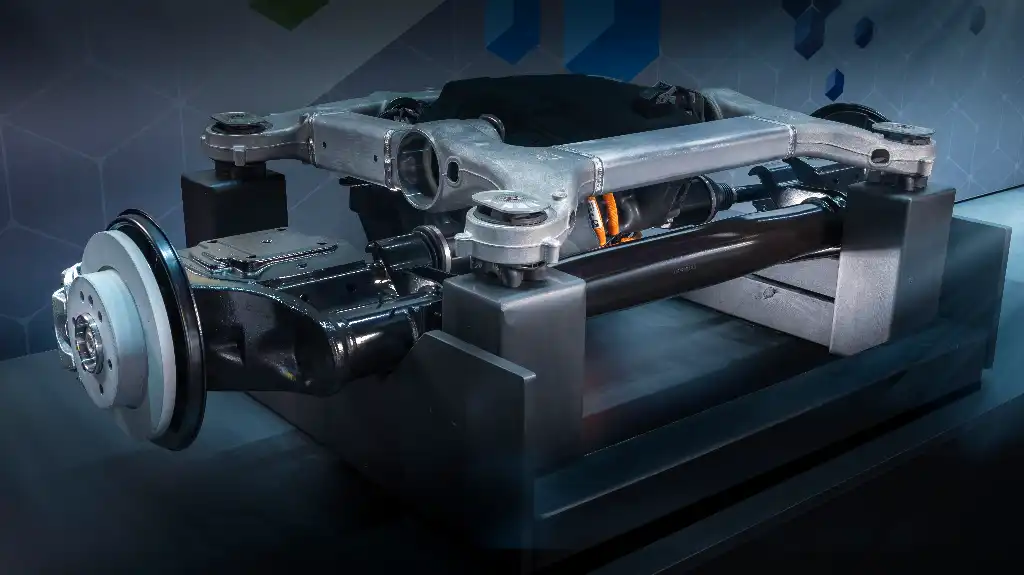
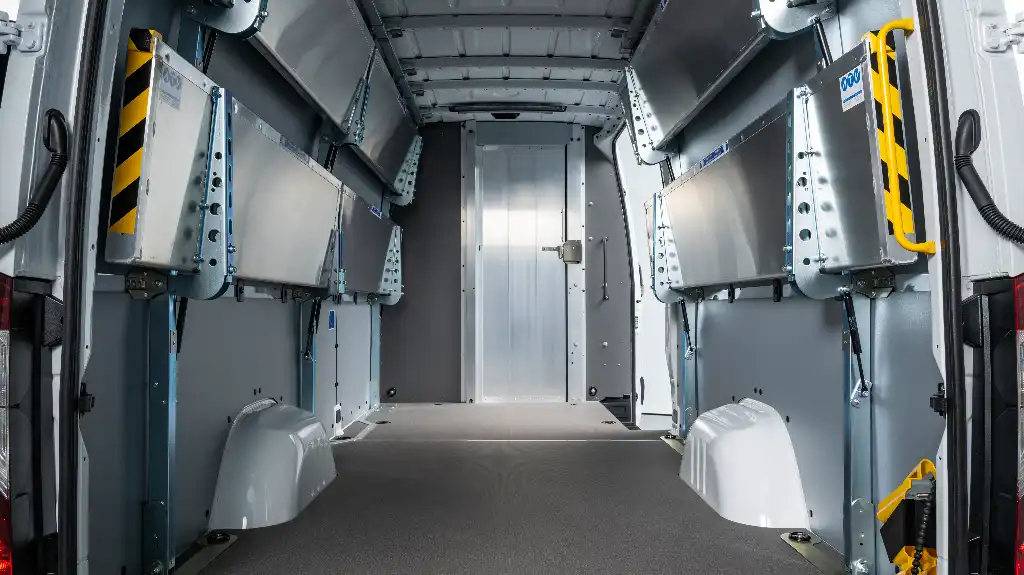
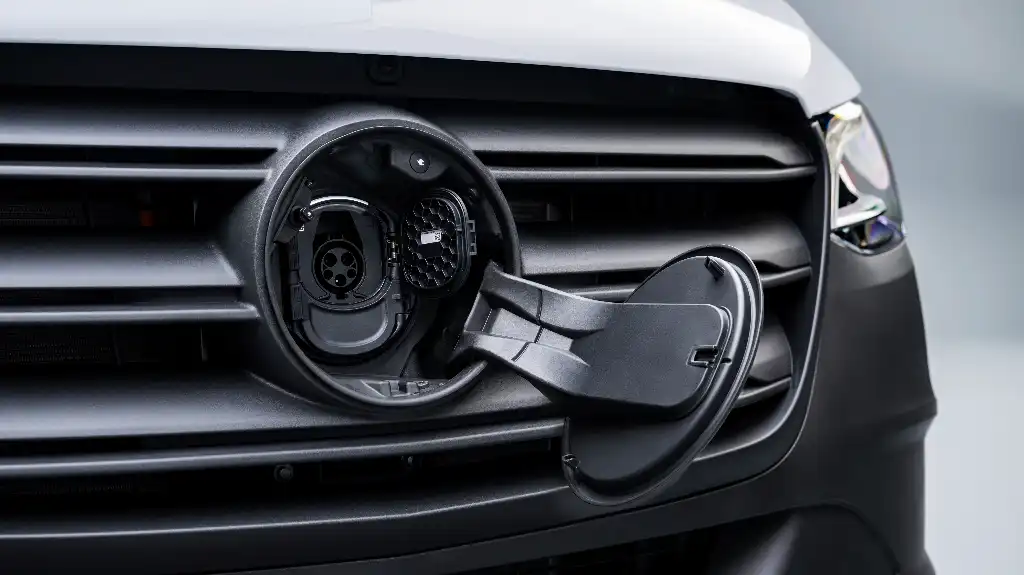

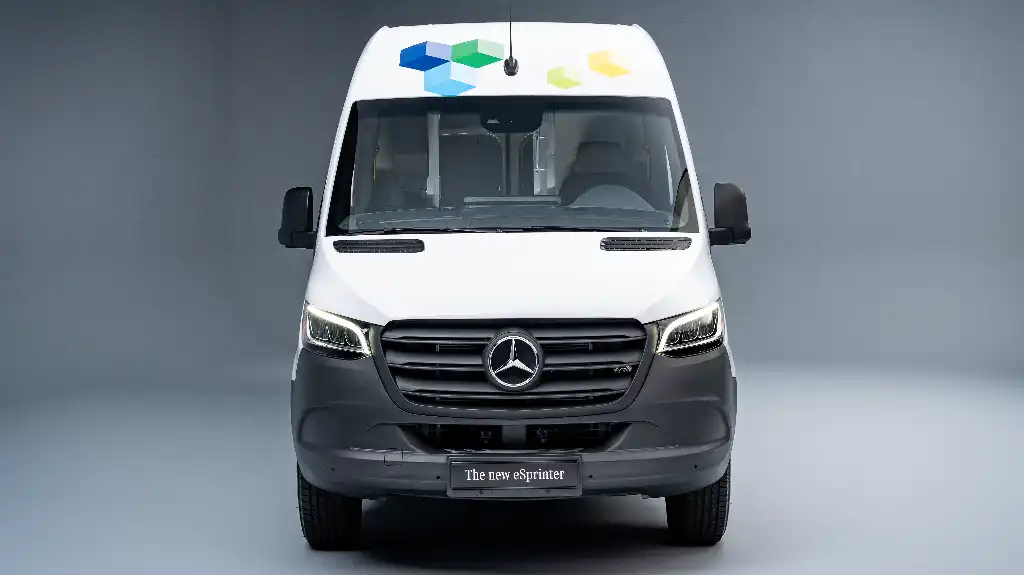
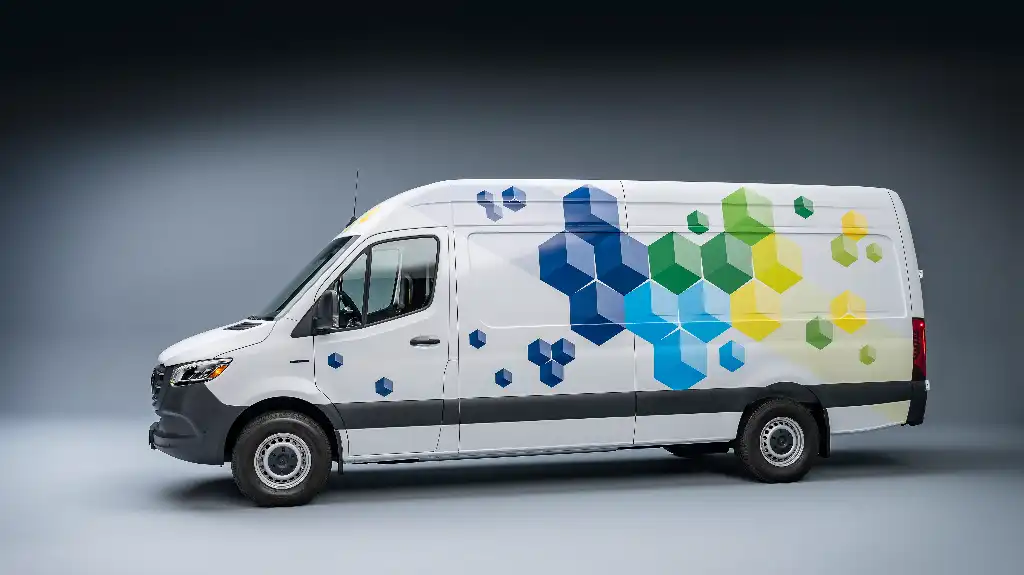

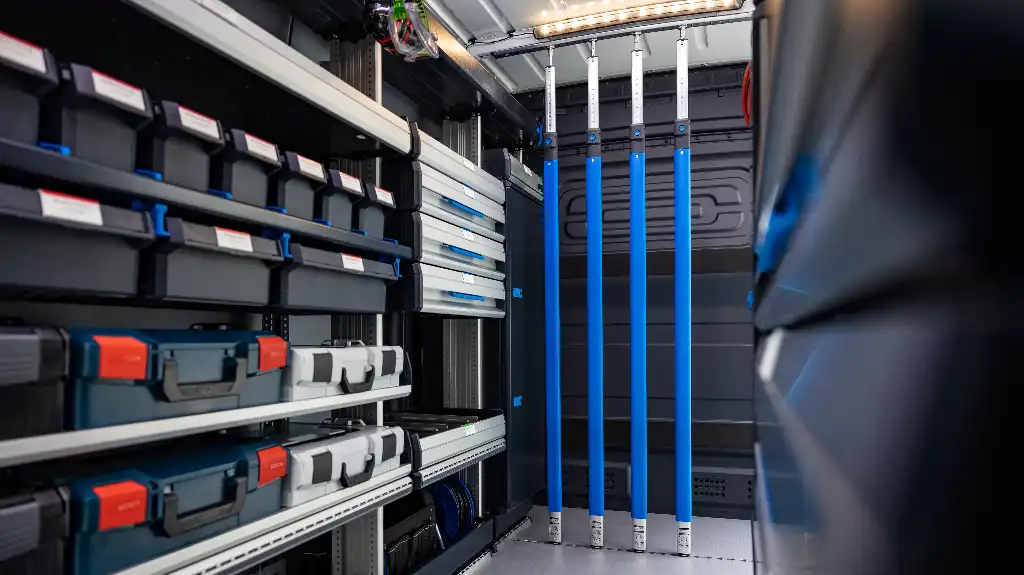
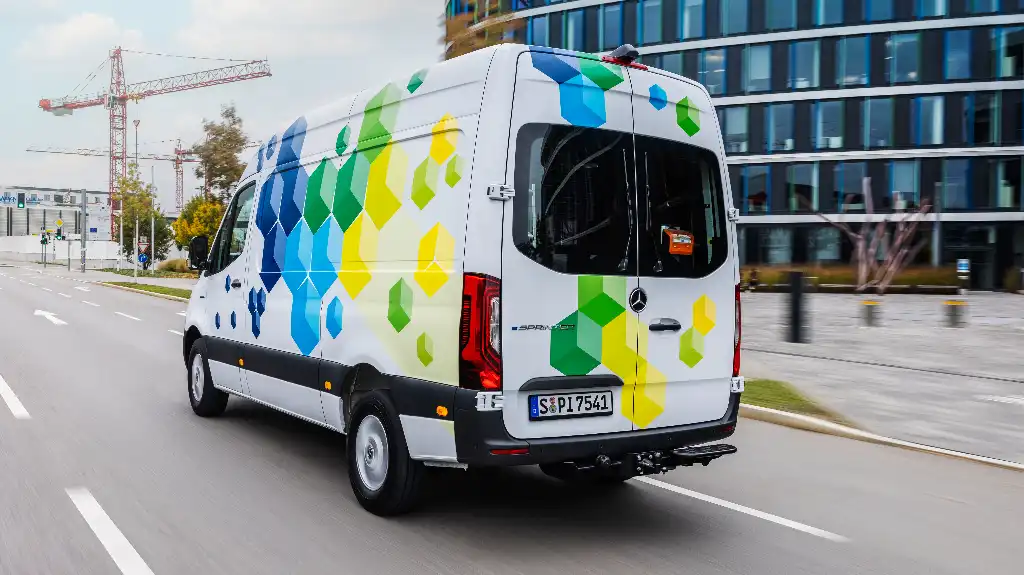


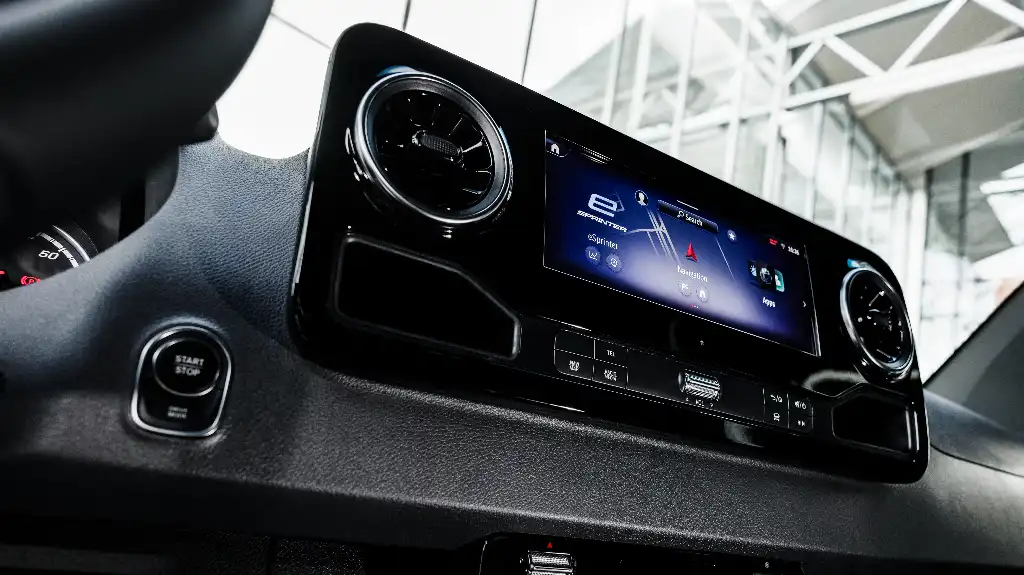


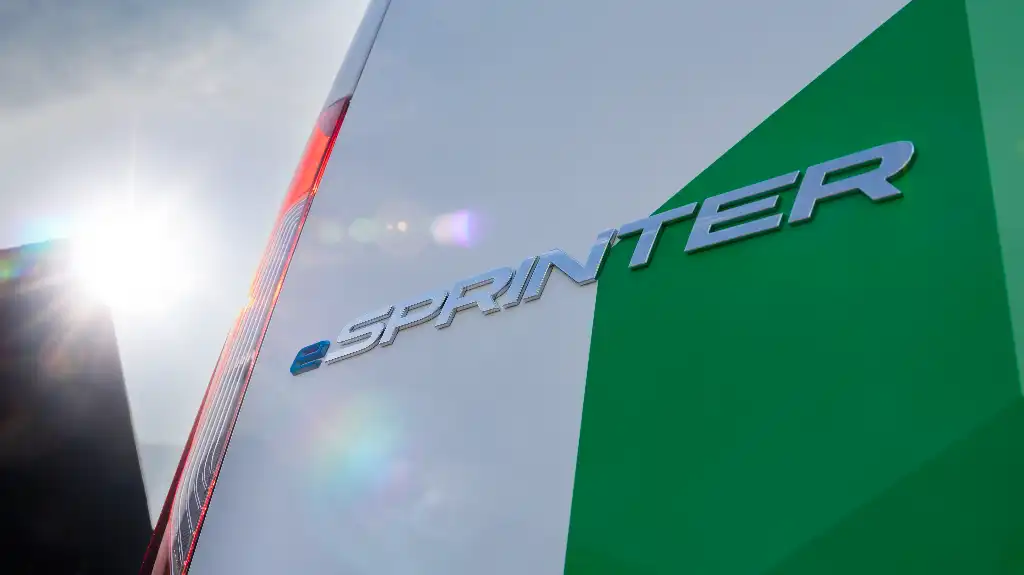
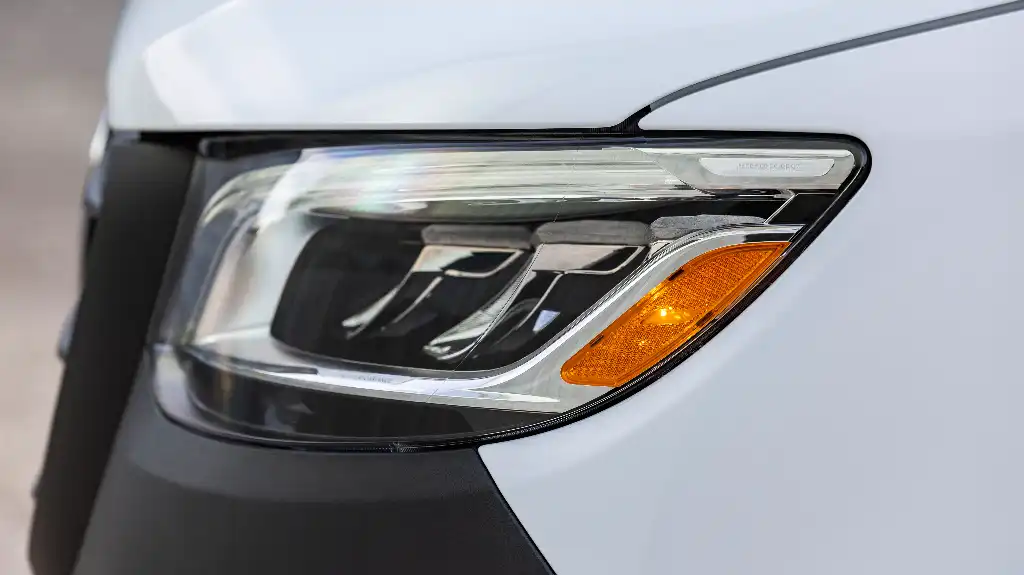



UK models of the Mercedes eSprinter will come in early 2024, so it's going to take a while. Production will begin in the US and Canada in the second half of 2023, before starting in Europe latter in the year.
Panel van models will go on sale first followed by chassis cab and the various bodied versions direct from the factory.
Pricing will be revealed closer to the time, but expect it to be somewhere in the region of the current eSprinter price north of £50,000.